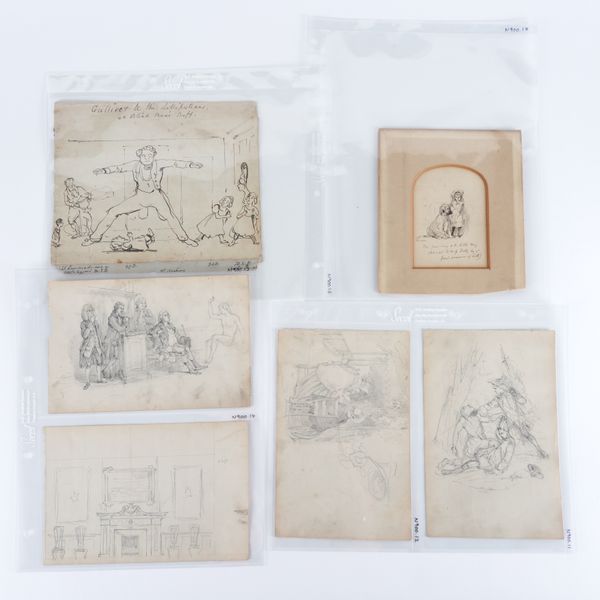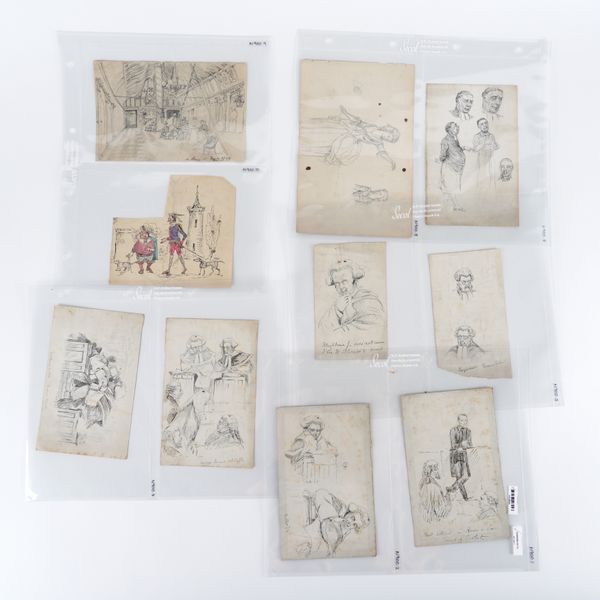THACKERAY, William Makepeace (1811-63). 18 original drawings, in pencil, pen and ink, and watercolour, [n.d.]. Various sizes, from c.115 x 85mm to 178 x 230mm, six in pencil, one in watercolour, 11 in pen and ink.
| Estimate: | £1,500 - £2,500 |
| Hammer price: | £1,100 |
THACKERAY, William Makepeace (1811-63). 18 original drawings, in pencil, pen and ink, and watercolour, [n.d.]. Various sizes, from c.115 x 85mm to 178 x 230mm, six in pencil, one in watercolour, 11 in pen and ink, including a series of six studies of judges, barristers and court scenes, a watercolour inscribed on the verso in a later hand "Children looking into a Cake Shop Window for 'Denis Duval' by W. M. Thackeray", a humorous sketch entitled "Gulliver and the Lilliputians at Blind Man’s Bluff" showing Thackeray playing with a group of children, and a page of doodles comprising studies of heads and monograms (this last mounted with an envelope in a folder with slip-case; sent to George Smith). [With:] George Cruikshank (1792-1878). Five etchings, on India paper and mounted on card, illustrating the story "Hop o’ my Thumb & the Seven League Boots", the first illustration with autograph inscription on mount "W. M. Thackeray Esq., with the regards of George Cruikshank, 1853". Relics from the stillborn artistic career of William Makepeace Thackeray, preserved at least in part by the publisher George Smith; with etchings presented to Thackeray by Cruikshank. On his return to England from Germany in 1831, Thackeray took up the study of law at the Middle Temple. He applied himself rather half-heartedly for almost a year, spending more time developing his passions for the theatre and for reading fiction and history. Losing any real ambition for the law, and without entrée to the circles of society which his expected fortune and his public school education led him to expect, he spent the year of his maturity in a variety of "ungentlemanly" pursuits, working as a bill discounter, desultory journalist, and artist. In September 1834 he moved to Paris, for what was supposed to be a three-year apprenticeship in the ateliers of a French artist, applying himself happily and seriously to his studies only to discover, within a year, that his talent for comic drawings would never develop into satisfactory art. He did, however, continue to work closely with illustrators throughout his career, from George Cruikshank and John Leech (a friend from boarding school) to Richard Doyle and Frederick Walker. Provenance: George Smith (1824-1901, publisher) [part]; Christie’s, London, 29 May 1986, lot 244.

